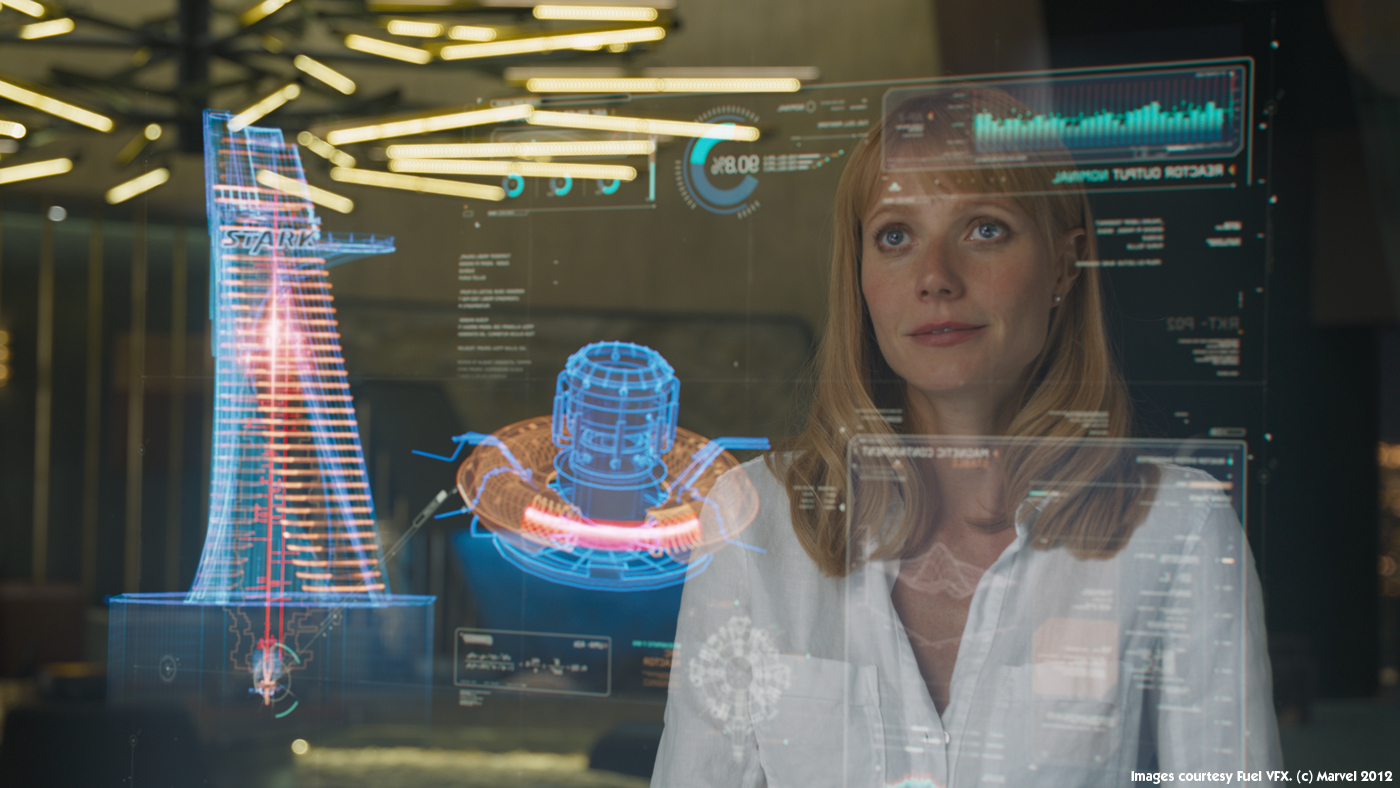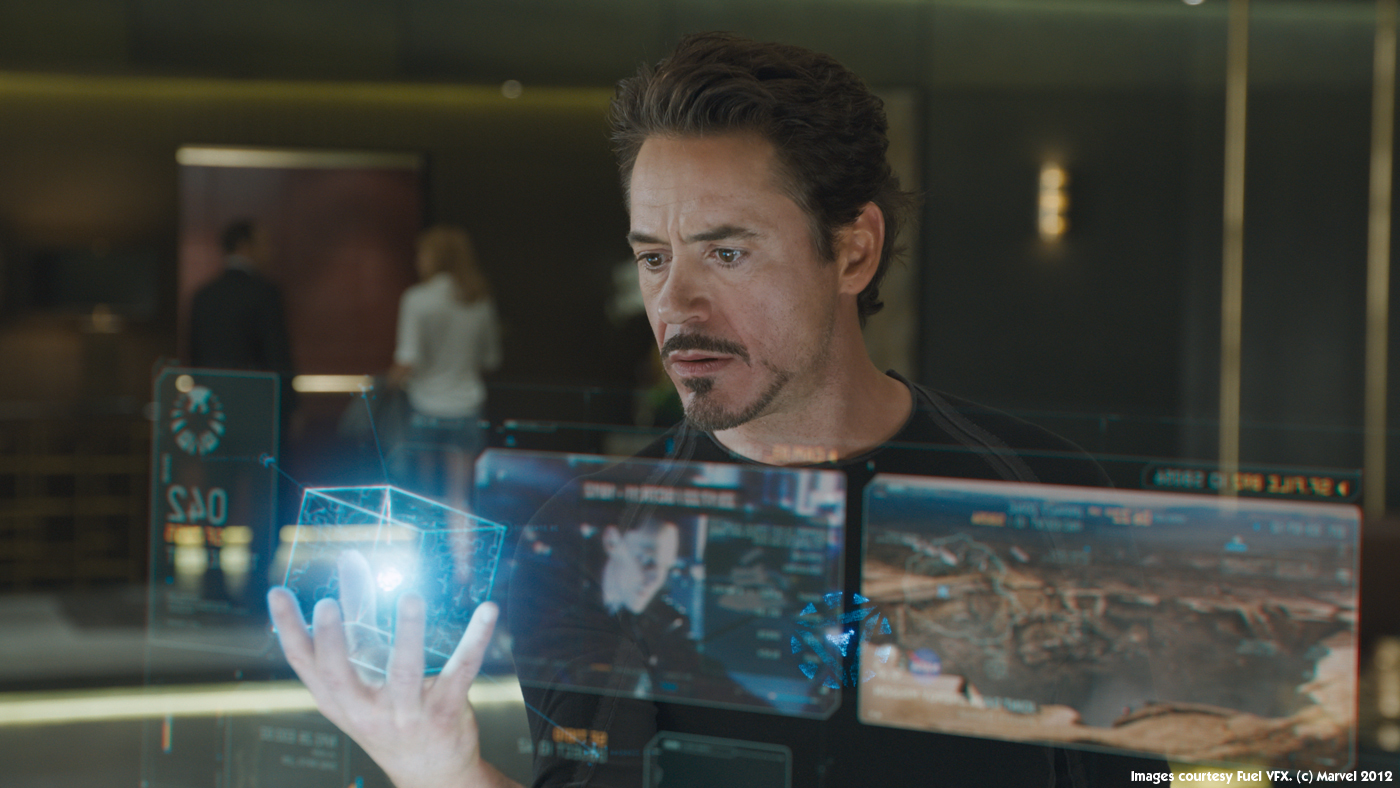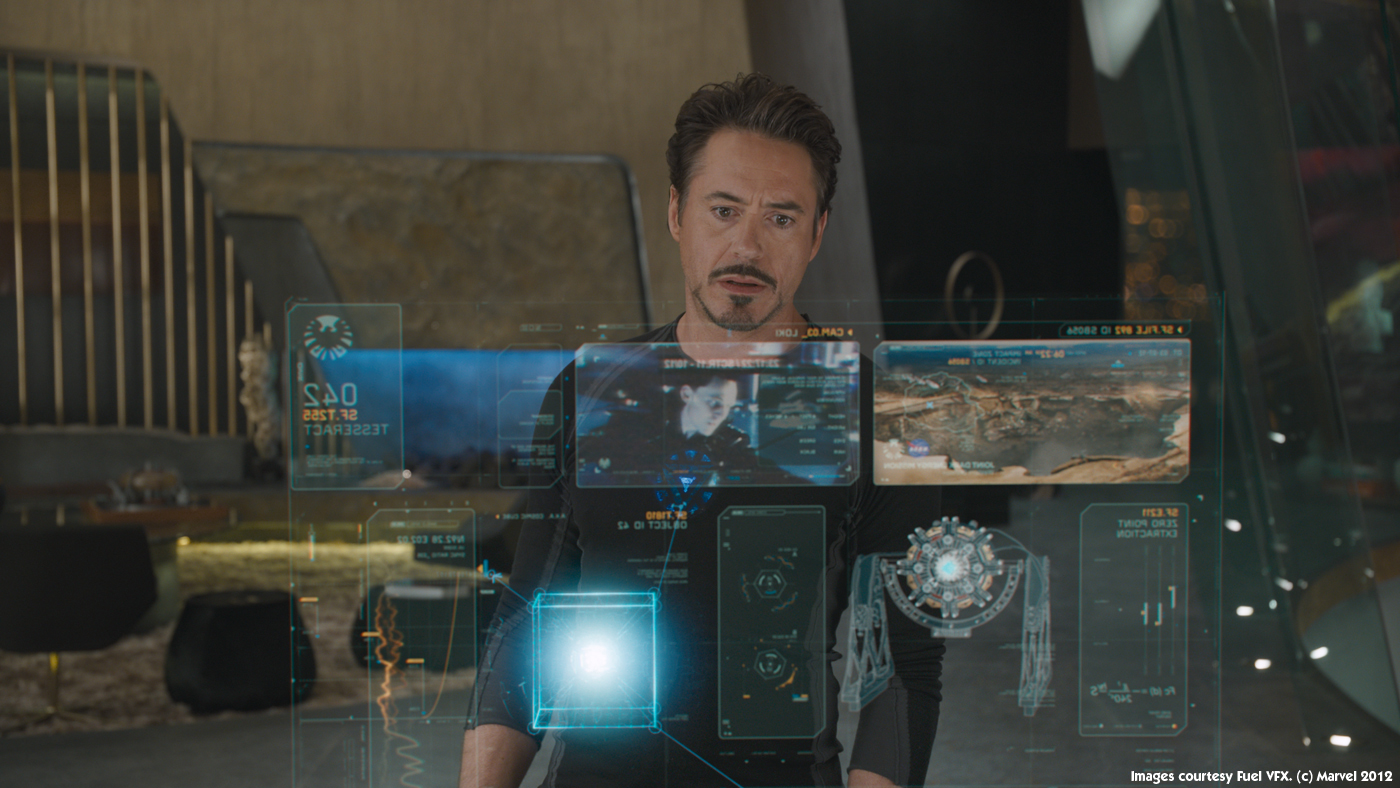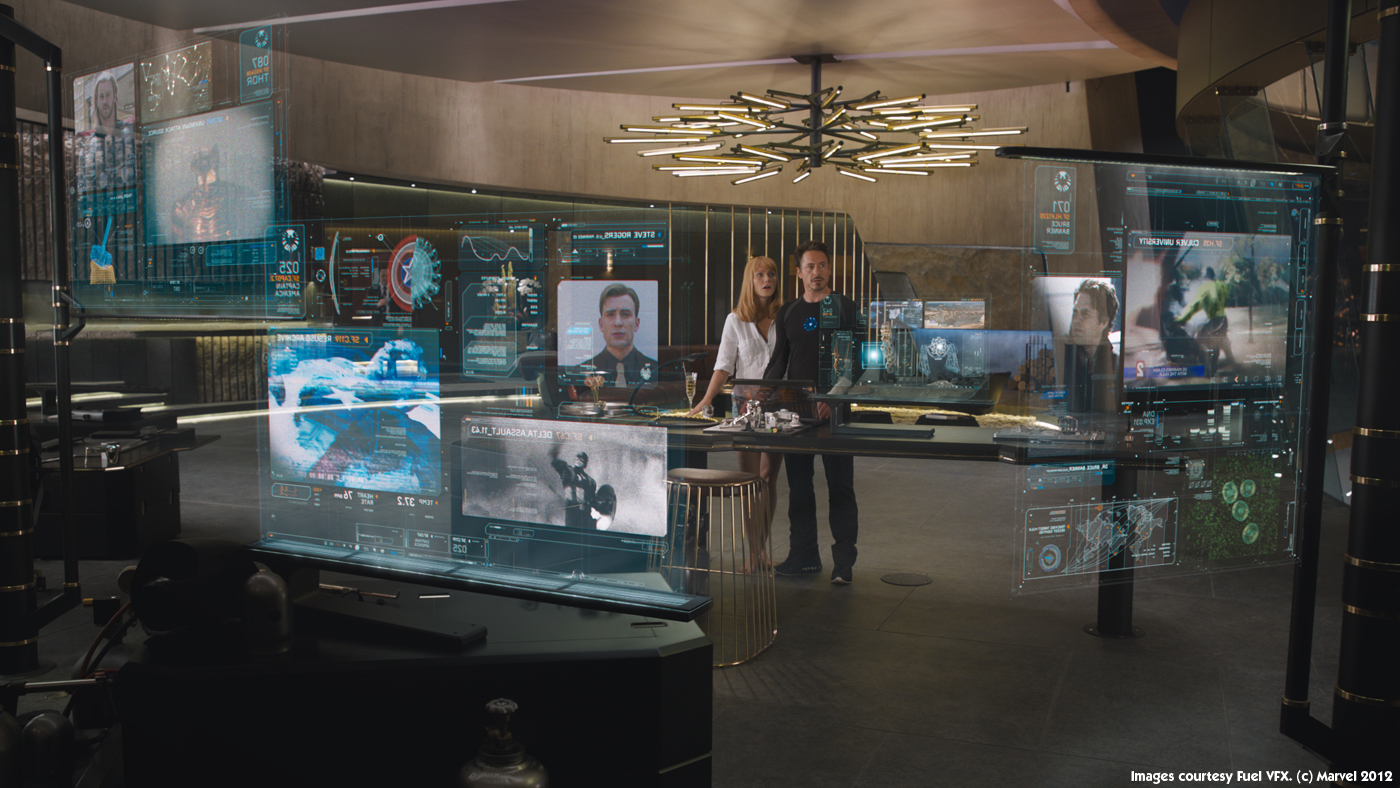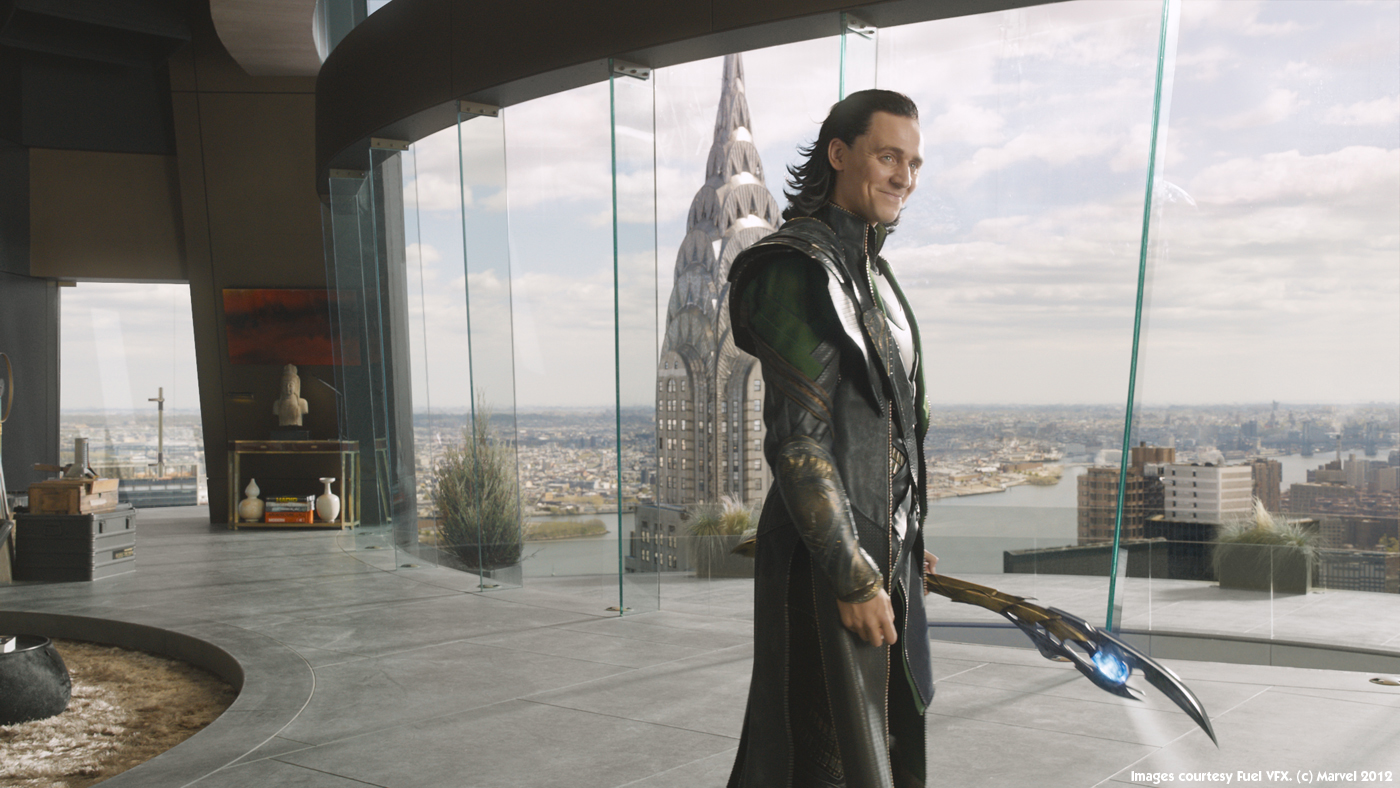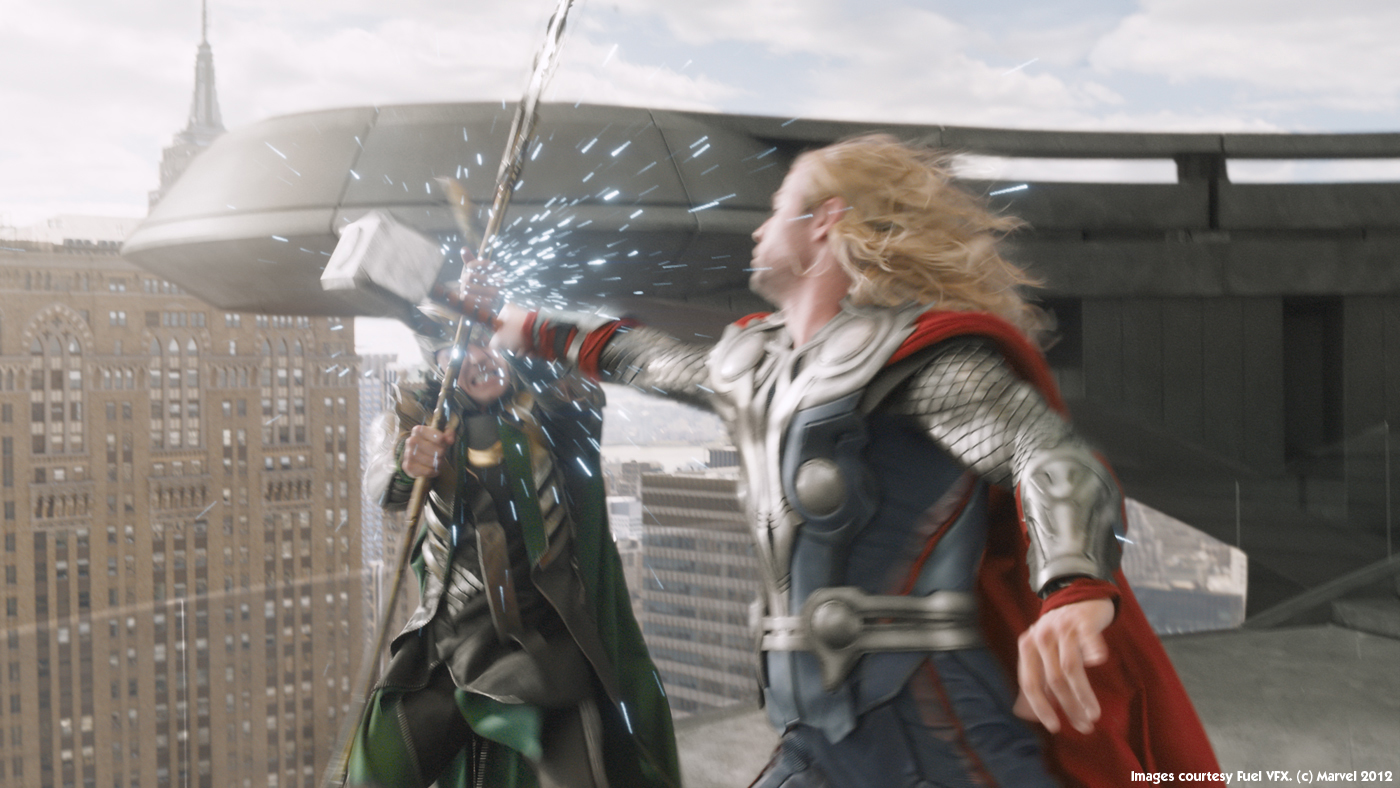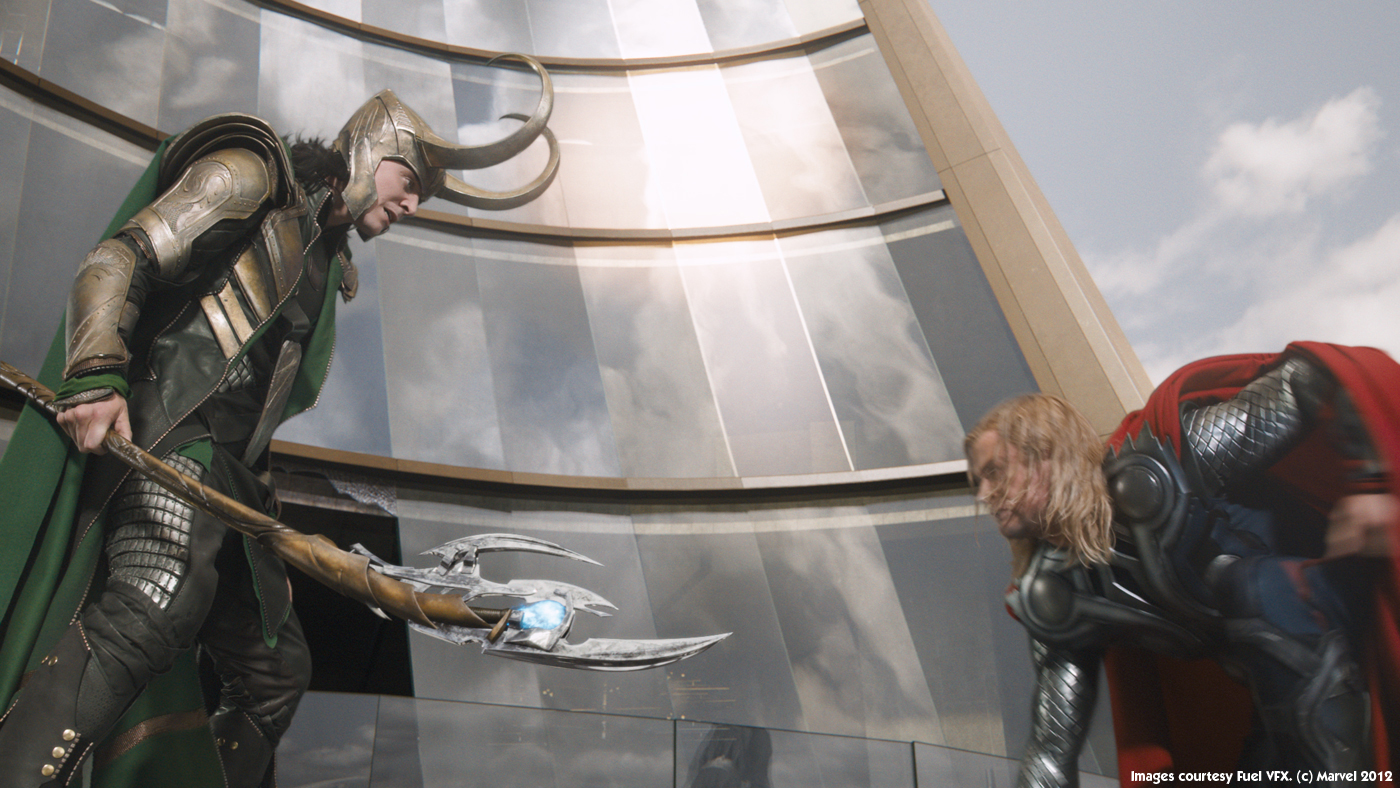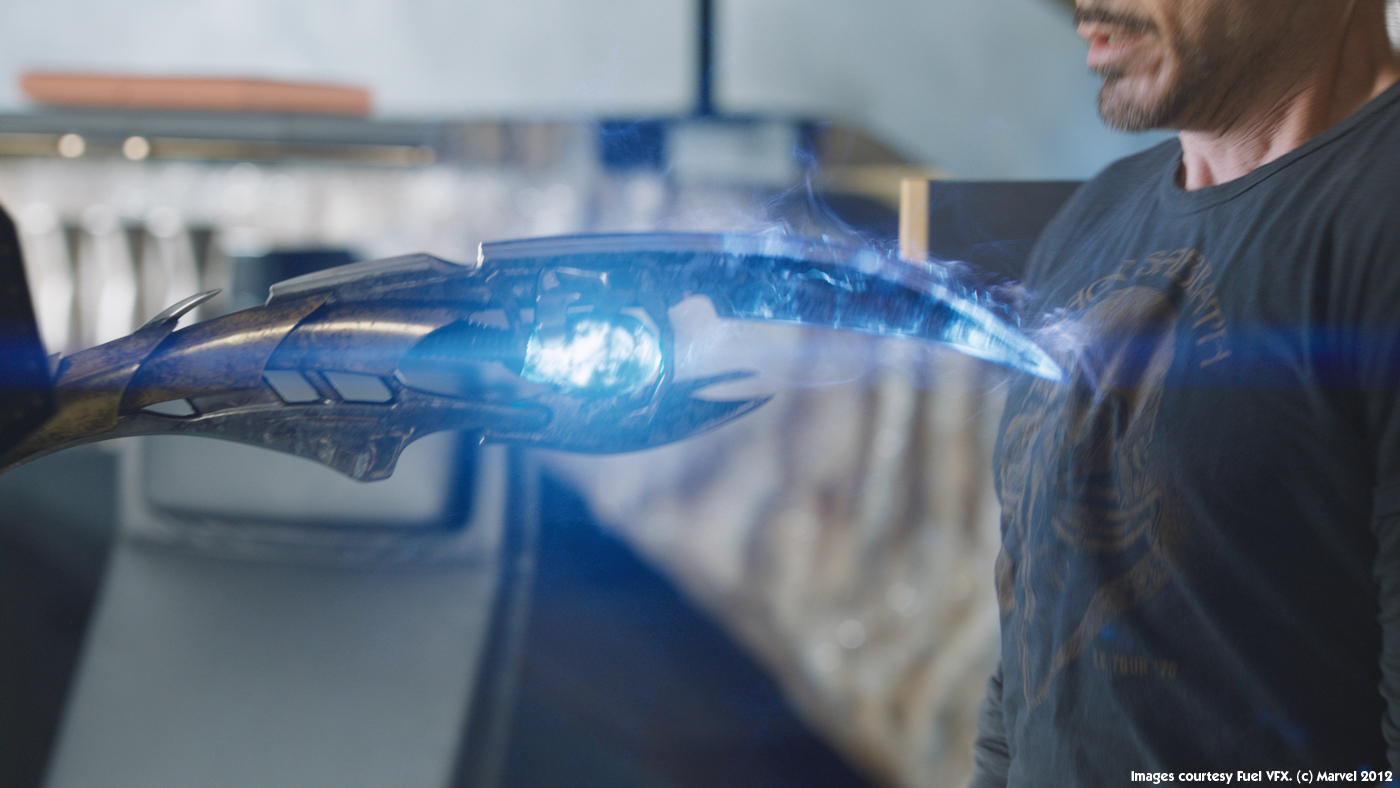Simon Maddison is back on The Art of VFX. After he discuss the effects of Fuel VFX on COWBOYS & ALIENS, now he explains his work on THE AVENGERS.
How did Fuel VFX got involved on this show?
We’ve been working with Marvel for a few years now. THE AVENGERS is the fourth film we’ve done following IRON MAN 2, THOR and CAPTAIN AMERICA and it was really good to work with Janek Sirrs (VFX Supervisor) and Susan Pickett (VFX Producer) again who we got to know on IRON MAN 2.
Can you tell us more about your collaboration with Production VFX Supervisor Janek Sirrs?
Janek is great to work with because he’s a very good communicator and gives clear briefs with reference materials to help illustrate the look or feel that’s required. We’re very fortunate with Marvel that we’ve been trusted to bring some of our own design ideas to the table, and Janek is excellent at giving the necessary feedback on what’s the right direction for various effects.
What Fuel VFX done on this show?
Fuel looked after three sequences in and around Tony Stark’s penthouse. In a scene near the film’s opening Tony and Pepper are celebrating Stark Tower coming online when Agent Coulson from S.H.I.E.L.D interrupts them. Fuel designed and created the various holograms featured in this scene that give an insight into some of the other members of the Avengers team as well as the tesseract artefact.
We added the sweeping views of New York behind the large glass windows for both night and day looks in two different sequences, and extensions to parts of the interior set.
Towards the end of the film, Loki and Thor battle it out on the balcony outside of Tony’s apartment. This was shot on a blue screen in a studio, but needed to look like it was on the Stark Tower balcony in New York so we created a CG exterior of the Tower that could replace the small set piece where required and also join up to some of the live action elements.
And then there were some extra shots including the CG Stark Jet (a re-use of the Fuel design used in IRON MAN 2); the Security Council monitors; and some shots at the end of the film to integrate Loki into the smashed concrete floor after he has a run-in with the Hulk.
Can you tell us in detail the design of the various holograms inside Tony Stark apartment?
We really started by referencing the IRON MAN films because there was a strong design precedent set there, so we spent a lot of time discussing what was relevant and what we could do with them.
Some of the things we paid attention to when designing the holograms included the lighting. If we pushed how much it ‘flickered’ for example, it looked fake. Push it too far the other way and it was hard to read, or just didn’t look good.
Another important factor was how much focus we placed on each of the elements in the dossiers. When Tony activates them, there are over 70 unique elements of information all on the screen at the same time conveying parts of the story. We needed the audience to take some of that information away, but it still needed to look cool, not interfere with Robert Downey Jr’s performance, and we needed to incorporate the tesseract. So we were careful to get the balance right.
Most of the early work on the holograms was done using Photoshop and After Effects with the 3D done with Maya. All of our compositing was done in Nuke.
Can you tell us more about the creation of the impressive New York background and how did you manage the challenges of the day and night versions of it?
The New York background was a digital asset supplied by ILM. However, the way we needed to use it was a bit different to their usage so we had a bit of work on our end to adapt it – mainly additional work on the Chrysler building as it was quite prominent in our shots and adding life to the background cyc that was particular to our shot angles.
For the daytime cyc this included steam from rooftop vents, moving clouds, moving reflections on the water and some slight rolling highlights on the Chrysler Tower when the camera moved. At night though, these subtleties wouldn’t be readable so for that we mainly just added bright defocused city lights that danced around because they were being affected by the atmosphere. Some distant planes in the sky and moving traffic with headlights also helped in certain shots.
Can you tell us more about the challenge with the reflective glass windows to composite the cityscape?
There’s two parts to that challenge: the technical work of extracting the set and cast reflections, which were sometimes corrupted by the undesirable reflections of lights and gear; and then the creative decisions regarding what reflections to keep in the shot and at what brightness.
Getting the overall exposure of the New York cyc for the daytime shots was probably the most important thing. Obviously you want to be able to see the city outside the window but you also need make it bright enough so that it looks like it’s all been exposed in the same image as the foreground. If you really tried to shoot that with a camera you would probably find that the background would have blown right out. We came to a balance with Janek by pulling it down slightly from where it should probably sit in reality and using the idea that the glass in the windows was slightly polarized. There’s a number of layers of glass in those shots and if you look carefully at the balcony outside the apartment, you can see that the more levels of glass you see through, the darker the background appears to be. Other less obvious things helped as well, such as how much the light wrapped around the edges of the foreground plate, especially the actors’ hair.
Have you extended the interior set?
Yes, there was some minor set extensions required for the inside of the penthouse. The glass windows needed to be extended to the ceiling and we did some extensions to the underside of the balcony outside.
Can you tell us more about your work on the Loki – Thor fight sequence on the balcony?
The sequence is quite complex in that we needed to include a lot of CG elements such as a CG Stark Tower set extension, a New York city panoramic cyc, a CG replacement of Loki’s scepter, scepter blast FX and hammer/scepter clash FX, background alien chariots and reflection replacements in the practical glass. It’s also got about 60 shots in it, which is many more than you think when viewing it.
Getting the Stark Tower set extension looking right was probably the biggest challenge. It wasn’t long after we received the plates that we realized that the partial set-piece wasn’t a good fit with the CG version of the Tower. So we had to modify the design of the CG Tower as well as replace more of the practical set than we originally intended. That would be OK in most circumstances, except in this case, any changes we made affected ILM because they also had Stark Tower in their shots. So with a bit of back-and-forth with Janek and ILM’s supervisors, we worked it out to make sure we found a solution.
Meanwhile the lighting in the plates was proving a bit tricky. The Loki-Thor fight was filmed on a sound stage with the partial set against blue screen, but needs to take place outdoors, on Tony Stark’s penthouse balcony. So we were fighting the studio lighting a bit – the plate photography was telling us one thing, but we needed to make that look like something else. To complicate matters, our shots also had to seamlessly intercut with ILM’s fully CG shots.
Janek was fantastic in this respect, working closely with us to push the live action grade and lighting in one direction, while working with ILM to keep their adjacent shots in line as well.
As the bigger issues were sorted, we could concentrate on getting the close-up textures on the Tower right, as well as focusing on the finer details such as the reflections in the glass windows, matching sun flares across the shots, and concentrating on the colour and brightness of the sky across all the shots – not to mention pulling keys through Thor’s messy hair which were still being worked on right up until delivery. All those things you take for granted when you’re watching the film, but without that attention to detail, would compromise the final shots..
Can you tell us more about the FX for Loki’s scepter?
There were two different effects in our sequences: an energy blast; and what became known as the ‘hijack effect’ where Loki taps his scepter to the chest of people to gain control of them.
These effects appeared in various other scenes throughout the film so it was really a matter of liaising with Janek about how he was directing the other vendors and coming up with a look for our shots that was consistent. Both of our scepter effects were relatively straight forward particle FX achieved in Maya.
How did you work with other vendors especially for the shots continuity?
Fuel’s work had continuity implications with ILM’s work, mainly in relation to the Loki-Thor fight scene where our work intercut with theirs. Janek was invaluable here and kept his eye on the bigger picture directing each vendor accordingly. Every so often both the Fuel and ILM teams would get on a call with Janek and talk through any issues and how we could help each other stay on track – the need to make changes to the CG Stark Tower model is a good example of where we needed to get our heads together.
What was the biggest challenge on this project and how did you achieve it?
Probably the Loki-Thor fight sequence for the reasons outlined previously.
Was there a shot or a sequence that prevented you from sleep?
No not really.
What do you keep from this experience?
A positive collaboration with clients and fellow VFX vendors allows for challenges to be overcome in the most efficient way possible and will make for the best results.
How long have you worked on this film?
We were in production for approximately 5 months.
How many shots have you done?
We delivered just over 150 shots.
What was the size of your team?
We had about 50 crew work on THE AVENGERS over the course of the schedule.
What is your next project?
Fuel was one of the lead vendors on PROMETHEUS, looking after most of the design-driven visual effects. So we are looking forward to telling people about our work on that.
A big thanks for your time.
// WANT TO KNOW MORE?
– Fuel VFX: Dedicated page about THE AVENGERS on Fuel VFX website.
© Vincent Frei – The Art of VFX – 2012


